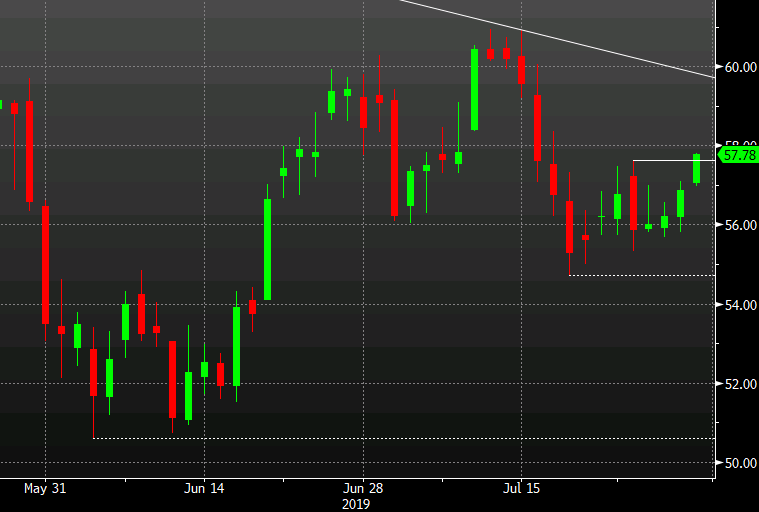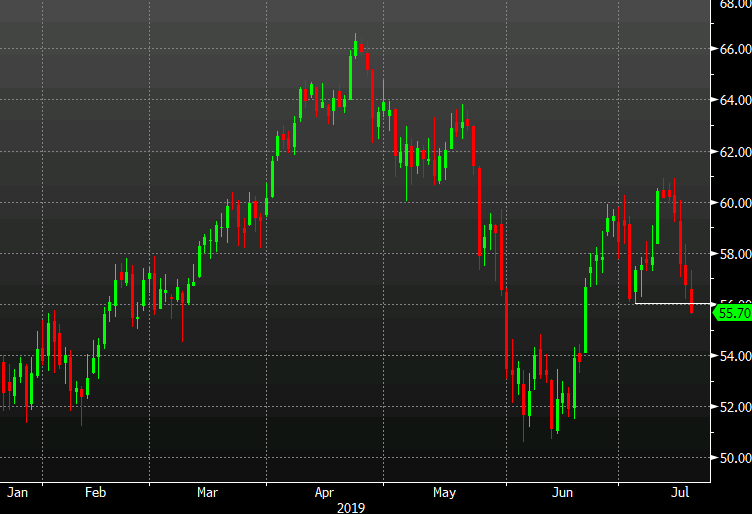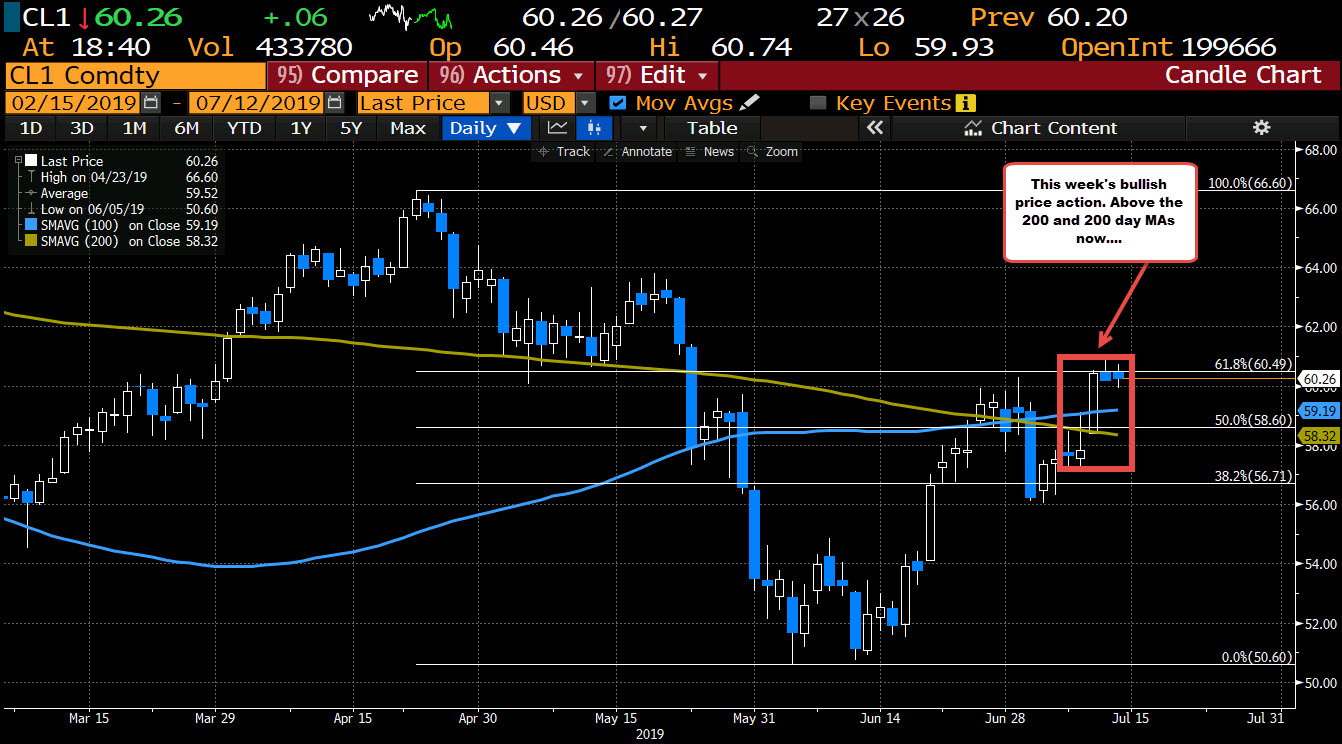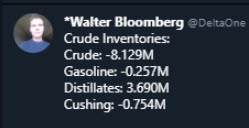Some naysayers who insist on cursing the thorn instead of being inspired by the beauty a rose find something or other to fret about in the June employment report that easily exceeded expected job growth and was the best since January. It succeeded in doing what several regional Fed presidents were unable to do, and that is to force a reassessment of the likely trajectory of Fed policy.
The yield of the January 2020 fed funds futures contract, which is among the best metrics for expectations of Fed policy in H2, rose nine basis points after the employment data, the largest increase in six months. The yield has risen by more than 20 bp since the day after the FOMC met in June. This, in the context of Draghi’s dovishness and expectations that Lagarde will continue the course (shades of Bernanke-Yellen), has boosted the dollar. Trump’s attempt to talk the dollar down fell on deaf ears, and the technical outlook that we review below suggests scope for dollar strength to carry into next week.
To be clear, our suspicions that the third significant dollar rally since the end of Bretton Woods is over is a larger and longer-term view. Closer to home, last week we suggested that the point of peak dovish had passed and that this favored a stronger dollar. However, we thought the technicals were more supportive of sterling. Instead, sterling slid to new lows since the early January flash crash before recovering a bit to close 1.3% lower. Despite the 0.2% loss ahead of the weekend, the Canadian dollar managed to the only major currency that held its own against the dollar, rising about 0.15%.
To read more enter password and Unlock more engaging content







